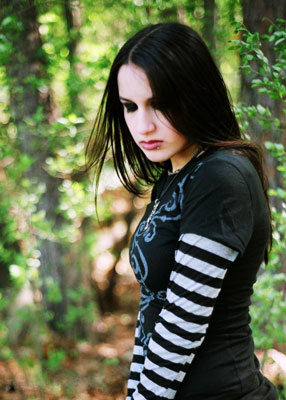All Nonfiction
- Bullying
- Books
- Academic
- Author Interviews
- Celebrity interviews
- College Articles
- College Essays
- Educator of the Year
- Heroes
- Interviews
- Memoir
- Personal Experience
- Sports
- Travel & Culture
All Opinions
- Bullying
- Current Events / Politics
- Discrimination
- Drugs / Alcohol / Smoking
- Entertainment / Celebrities
- Environment
- Love / Relationships
- Movies / Music / TV
- Pop Culture / Trends
- School / College
- Social Issues / Civics
- Spirituality / Religion
- Sports / Hobbies
All Hot Topics
- Bullying
- Community Service
- Environment
- Health
- Letters to the Editor
- Pride & Prejudice
- What Matters
- Back
Summer Guide
- Program Links
- Program Reviews
- Back
College Guide
- College Links
- College Reviews
- College Essays
- College Articles
- Back
What Therapy Is Really Like MAG
Most people are afraid to see a therapist, especially teens. I know I was. All I saw were visions of what most teens think when they hear “therapy” or “counseling”: inkblots and lots of tissues. I thought I would be lying on a leather sofa while an old man who knew nothing about me asked how various memories and scenarios made me feel.
But I have never heard “Now, how does that make you feel?” and I only lie down on the sofa in my therapist's office if I want to. She has a very nice couch and lets me put my feet on it. I do cry in therapy, yes, but I'm comfortable doing it. Not once have I done a Rorschach inkblot test. Even though I was terrified to start therapy, it is one of the best decisions I ever made.
At the beginning of seventh grade, I went to therapy for the first time. It was brought on by a string of events, including sending texts to a close friend saying I was going to start cutting, and blowing up at my mother. To this day, I don't remember my thinking behind either of these. Still, the dreaded Monday came when I walked into my therapist's office for the first time. I expected a cold room with broken pencils, that dark leather bed-type sofa, and an elderly man sitting in the corner.
I was fairly surprised when I walked in and saw a sandbox by the window. That was the first thing I noticed – the waist-level sandbox with tiny figurines in it. Then I saw the therapist. She was young and kind, and that wasn't an act. I sat down and sank into the leather couch, still afraid, despite the therapist's promises of confidentiality. I would rather have been part of the sofa than myself at that moment.
Over the next few weeks, my apprehension disappeared. I discovered that my therapist watched “Glee” and had read The Hunger Games. She was someone I could trust and talk to, who had my best interests at heart. She was a friend who could help me through my problems, but unlike “friends,” my doctor wouldn't tell anyone my issues or judge me. Since that first appointment, I'm now going to a different therapist, who I have just as good a relationship with, and who has given me even more of the help I need.
Through therapy, my mother and I realized that my mood swings weren't normal teenage hormones, nor were they residual sadness from being bullied in the sixth grade. I was diagnosed with dysthymia, a form of depression that runs in my family. If I had been diagnosed with it before therapy, I would have thought I was crazy. I would have thought I belonged in a padded room with a straitjacket. But now that I'm in therapy, I don't hide from my issues; I accept them and deal with them through talking and medication.
Because of the stigmas and stereotypes the media portrays about therapy, I feared going more than being diagnosed with depression or starting medication. Because of the fear of being dubbed “crazy,” many young people do not get the help they desperately need. They refuse to set foot in a therapist's office because they don't want to be seen as weak. But being in therapy does not equate to being crazy or showing weakness.
It is estimated that one in eight teens has some form of depression, according to kidshealth.org. How many of them have the strength to talk to a parent about getting help? While exact statistics of teens in therapy are unknown, it is obviously not enough, or one in twelve teens would not have attempted suicide in 2012 (according to the CDC). If there weren't a stigma attached to therapy, teens would get the help they need before they considered such a drastic act.
Stereotypes plague our culture. You might not have realized that therapy is stigmatized, but it is. It is much more pleasant and beneficial than what you see on television. If you think you are struggling, find the strength to reach out and ask for help; there's nothing wrong with it.

Similar Articles
JOIN THE DISCUSSION
This article has 3 comments.
